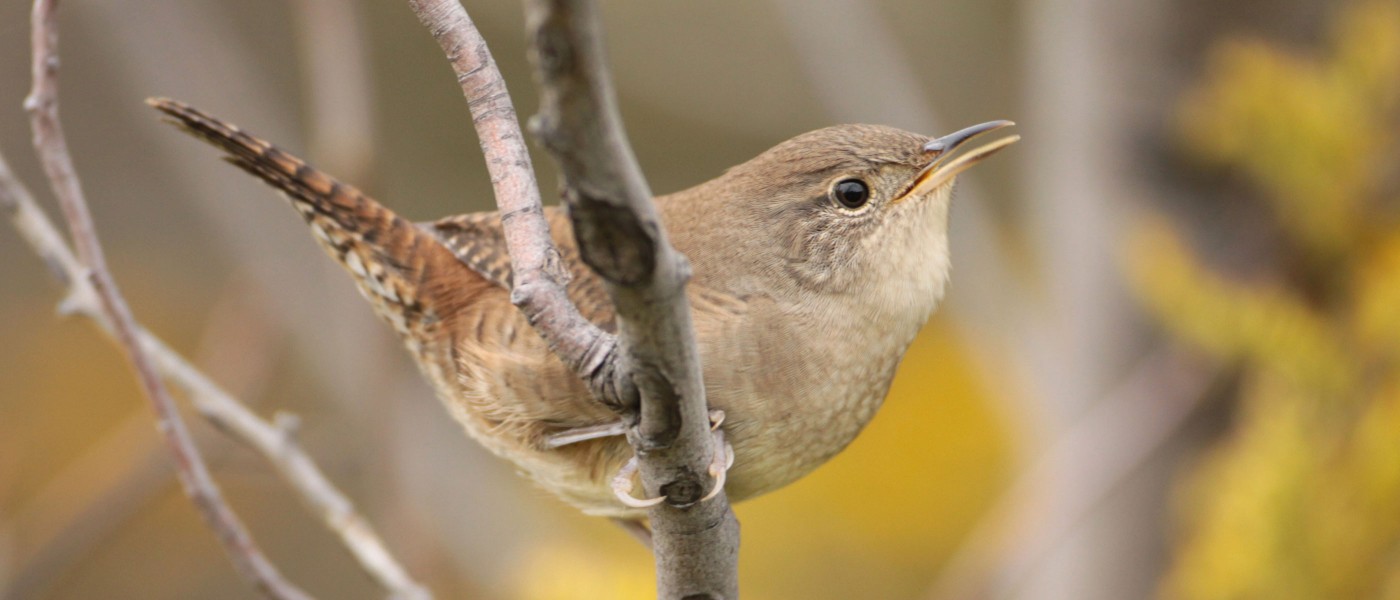Birds of Brooklyn: House Wren
Ever watch a TV commercial about, say, lawn furniture or garden tools and hear a bird singing in the background? Ever wonder what that bird was? It was very likely a house wren. Its song is the quintessential pleasant familiar birdsong, which makes sense, since it’s such a common bird and usually found near houses (hence the name). But this bird is feistier than it may seem. It’s quite territorial and doesn’t shy away from going after larger birds and even chipmunks!
The house wren is a small native species, brown in color with a very pointy bill. Males and females look very much alike. Overall the house wren is a very beneficial species, since it consumes a great deal of insects. It often breeds near human dwellings and can be found in all five boroughs of New York City, including Brooklyn. Here at the Garden, right now there's a very visible nest in a snag located in the Native Flora Garden.
The Birds of Brooklyn series looks at some of the most familiar and fascinating birds that call Kings County their habitat.
House wrens arrive in the area in late April and stay all summer until late August, when they head south for the winter. A nesting pair usually produces two broods of five or six youngsters during this time. Wrens live in tree cavities or man-made bird boxes in nests constructed of sticks, topped with a layer rootlets, grass, and sometimes fur. The male house wren sings a very bubbly song all summer, first to attract a female and then as it defends its nest.
More: Read about the osprey, another fasciniating Bird of Brooklyn.
What may surprise you is that this cute little bird is extremely aggressive toward other birds. If another bird, like a catbird or oriole, comes near its nest, the house wren will dive-bomb it until it leaves. Unwary chipmunks fare no better. If a house wren finds the nest of another cavity-nesting bird, like a swallow or chickadee, in its territory, it will puncture the eggs and toss them out of the nest. It will then replace the eggs with sticks as a way of saying, “This is my territory. Stay away!”
Even though a house wren will only use one cavity for its own nest, the bird stays busy filling all empty cavities in its territory with sticks to make them unusable to other cavity-nesting birds. This might seem selfish, but it's a successful strategy, which is probably why the house wren is so common.
In general, birders and most other people enjoy the house wren because its song is so easily recognizable and pleasant, and we appreciate its insect-eating work. Just remember—inside this four inches of brown feathers is a real powerhouse of energy and dominance.
The Birds of Brooklyn series looks at some of the most familiar and fascinating birds that call Kings County their habitat.


